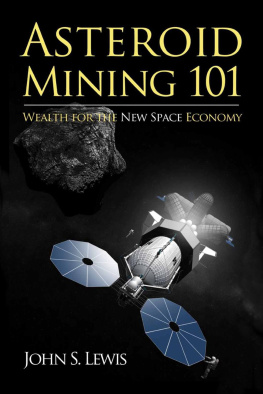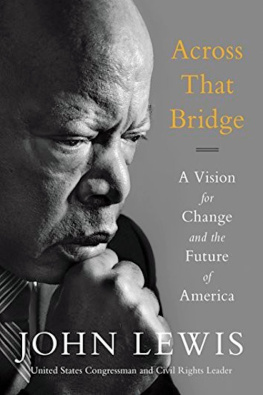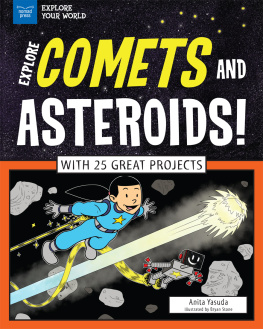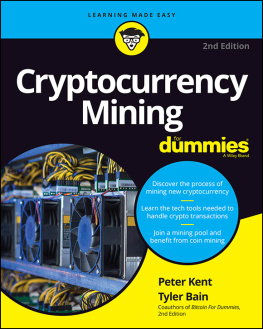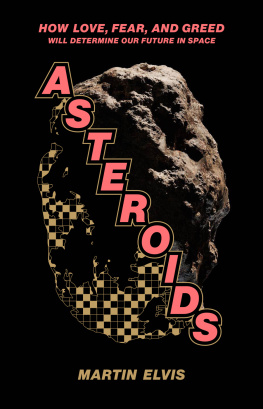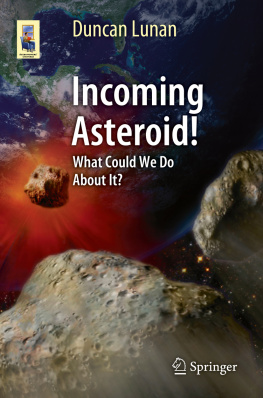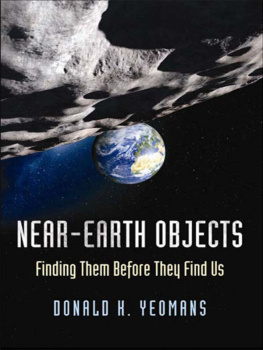Cover art by Bryan Versteeg, Deep Space Industries
Editor: David Gump, Deep Space Industries
2015 by Deep Space Industries Inc.
ISBNs:
978-0-9905842-0-9 (print)
978-0-9905842-1-6 (epub)
978-0-9905842-2-3 (mobi)
Additional information available at deepspaceindustries.com
Meteorite photos from Amethyst Galleries, Inc. (www.galleries.com) are 2014 by Amethyst Galleries, Inc.
Meteorite photos from Aerolite Meteorites LLC (www.aerolite.com) are 2014 by Aerolite Meteorites LLC.
Table of Contents
Preface
By Rick N. Tumlinson
The best way to predict the future is to invent it.
Dr. Forrest C. Shaklee
You live in a time when there are companies who want to fly into space and mine asteroids.
Think about it.
Real companies with staffs of talented engineers, scientists and businesspeople, funded by very smart and in some cases incredibly wealthy people who are themselves very successful business people, who want to send machines and possibly people to fly millions of miles out into space and dig up the rocks floating there in order to make even more money.
Who could have predicted this? Well, the father of American rocketry, Robert H. Goddard did. The father of Russian rocketry, Konstantin Tsiolkovsky, didand both saw this future over a century ago! But nothing was done: technology was too immature; the cost was prohibitive; imagination was lacking. Clearly, they were crazy. The New York Times said as much in an editorial on Moon-mad Goddards craziness published in 1926.
In any other time this would have sounded crazy. To many people it still does. Probably, even when it begins to happen, many will still think its crazy. In fact, even as they benefit from the wealth and possibility that is created as we harvest the resources of space and create a new renaissance, many will think such things and the people who do them to be crazy.
And it is. And yes, we are.
Exactly the kind of crazy that has led to every major scientific and economic revolution since some crazy hair-covered hominid (class of 00) decided to pick up a naturally provided stick or rock to see if it might help protect them from large hungry creatures with pointy teeth. Or a few million years later, a less hairy yet equally crazy descendant dropped a seed into a hole he had made with a similar stick or rock to see if he could actually grow the grains and berries that kept them fed in bad times. Or the distant ancestor who found little pieces of hard, shiny bronze in the ashes of his cooking fire and set about trying to make the stuff intentionally.
This is the kind of crazy that applies thought and imagination to observations of the real world, inventing new ways to defend ourselves or to increase the abundance of our vital supplies by using the tools available in crazy new ways.
It is this kind of crazy that takes a brilliant mind from the observation of dead rocks in space and their relationship to the development and evolution of planets and the solar system through the revelation that such objects not only pose an imminent and ongoing threat to our civilization, but that they can be defended against, and more, these same objects can be used to save our planet and help us expand our domain into the universe.
This is John S. Lewis.
And this is his time.
Within the last three decades something important and incredible has finally begun to happen. The rockets and space systems we thought reserved for the use of governments and soldiers have found new purposes, and new masters, people who want to use them to go beyond the purposes of science and state and turn them into tools that can be used for other goals, such as flying people and machines out to the frontier for fun and profit oh, and to live. Weapons of mass destruction morph into both weapons of mass protection and heavenly chariots delivering untold wealth to Earth and Earths children.
Well before the idea that an Elon Musk or Jeff Bezos could build and own their own fleets of spaceships, in fact well before either of them had the idea they could own their own car, John Lewis was exploring the solar system from his office at MIT and then the University of Arizona, and coming to the realization that the solar system was not some neatly arranged set of planets with a well-placed band of asteroids in its middle, but was full of errant chunks of rock and ice flying in all directions and wreaking havoc on these celestial objects in often unpredictable and sometimes incredibly spectacular ways. His book Rain of Iron and Ice laid out these ideas, and in harrowing detail carried us through the life of a world that is the hapless bulls-eye in a cosmic shooting gallerya realization made far more harrowing by the recognition that the bulls-eye is us.
In it, he tied together thousands of eye witness reports of meteor strikes on the Earth, and showed how not only would there be no life here without these objects, but also how life and history have been affected by them, and how, if we remain passive, life and history may come to an end when one of them takes us by surprise.
In parallel to this evolution of thought, John was also realizing that these same objects must carry the very materials and supplies the human race could use to rise beyond its home on Earth and expand into space, not only making humankind essentially un-killable, but prosperous and vital in ways that stagger the imagination.
The idea of using space resources to do things in space was not new, but no one had pulled it together in such a focused, scientifically credible and easy to understand way as Dr. Lewis did in his book Mining the Sky. The perfect sequel to Rain of Iron and Ice, this volume laid out a clear and concise approach to developing an economy and industrial base using space resources, with reality-based numbers, scientifically supportable research and solid, common sense explanations.
Early on in his work building these concepts into the core of a new vision of our relationship to space, we joined forces with Dr. Gerard K. ONeill and physicist Freeman Dyson to give them life in the form of encouraging action in the next generation. ONeill had written a game-changing book of his own called The High Frontier that laid out a clear and compelling case for developing human communities in space, and with Dyson at his side they fathered the Space Manufacturing Conferences in Princeton, New Jersey. There they formed a coalition to move these ideas from the mere pages of books and papers out into the world, and to enable young minds of the time to enter their conversation and actually engage in the craziness themselves. It was the TED and South by Southwest of its time in terms of space, where young minds and crazies could come together with their peers and heroes and lay out ideas that were, as we used to say not ready for prime time.
This is where I and the others who now pursue our own dreams of opening the frontier first came together. And it was there where we first were given what I call Permission to Dream that we might actually be able to go out there and do those things. It was at these meetings that we began to develop the depth of understanding and connect the dots that would enable us to realize that the dream of expanding human civilization into space was not only feasible, but imminently so, and yes, imperative.
It is from the core concepts laid out by Dr. Lewis that we were able to translate Dr. ONeills vision into the reality of a set of basic steps that could lead us to establishment of companies and teams that would really begin to make it happen.
And it was a result of their ability to listen to us, interact with us in ways that were firm and yet encouraging that created in us a self confidence and fired our passions with the heat of urgency so that we could go out into a world that sees us as crazy to do exactly what the people in that world need us to do. This core group of mentors could have locked us out, could have played the academic game of elitism, but they did not. They almost delighted in lighting our fires, and their kindness and willingness to listen to our crazy ideas was critical to starting us on the critical path we needed to take to begin to make it happen today. Along the way, those in this core group, who now range from top NASA leaders and scientists to successful businesspeople and entrepreneurs, were able to fire the minds and imaginations of others, people who had made huge amounts of money in fields like computers, software, payment systems, real estate and entertainment, until, just as the old ways of doing space began to reach their end, these new leaders were able to rise and create the new companies and projects you see today.
Next page
